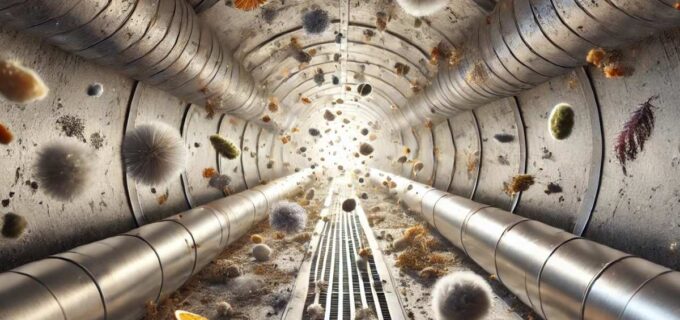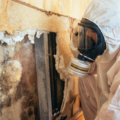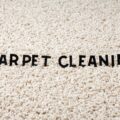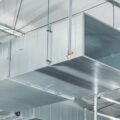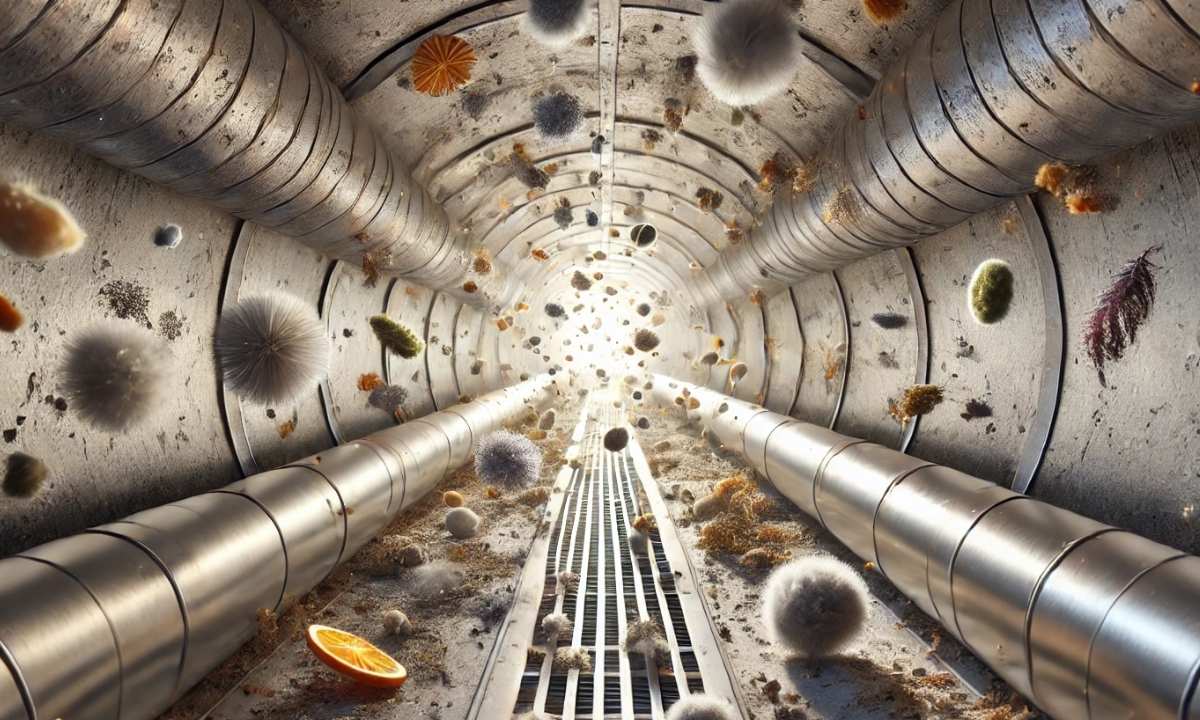
Singapore’s tropical climate presents a unique challenge for its residents: the quest for comfortable and healthy indoor environments. As air conditioning systems hum continuously across the island to combat the relentless heat and humidity, an often-overlooked issue emerges—air duct cleanliness.
These ducts, integral to your home’s HVAC (Heating, Ventilation, and Air Conditioning) system, distribute conditioned air throughout our living spaces. However, when neglected, they can become repositories for various pollutants, including dust, dirt, and mold. Each time the HVAC system operates, it may circulate these contaminants, potentially compromising indoor air quality.
This concern is particularly pressing given the alarming rise in allergies in Singapore and other parts of Asia. While outdoor air pollution frequently garners attention, indoor air quality is equally vital, especially considering individuals’ time indoors. Poorly maintained air ducts can exacerbate allergy symptoms, leading to discomfort and potentially serious health issues for sensitive individuals.
This blog post aims to delve into the importance of air ducts within HVAC systems and illuminate the potential health risks associated with their neglect, providing insights that can foster a healthier home environment. Understanding this connection is crucial for improving indoor air quality and safeguarding your and your family’s health and well-being.
Understanding Air Ducts
What are Air Ducts?
Air ducts act as the channels that deliver temperature-regulated air to every room in your home. Without them, efficiently distributing cooled or heated air would be impossible, leaving certain areas uncomfortably warm or cold. The design of air ducts ensures that air flows smoothly throughout the house, maintaining a consistent indoor climate. However, beyond just regulating temperature, air ducts play a significant role in the overall quality of the air you breathe indoors.
Common Contaminants Found in Air Ducts
As air circulates through these ducts, it can pick up and distribute contaminants that settle within the ductwork over time. Common pollutants include dead skin cells, fabric fibers, and pollen, which can easily infiltrate homes during the flowering seasons. In homes with pets, dander becomes another prevalent contaminant. Additionally, moisture from Singapore’s humid environment can lead to mold growth within the ducts, further degrading air quality.
As these pollutants accumulate, they are continuously recirculated throughout your living spaces, leading to a build-up of allergens in the air. This can be particularly problematic for individuals with allergies or respiratory conditions, as they may experience heightened symptoms or increased sensitivity.
Understanding the essential role of air ducts in maintaining both comfort and air quality underscores the importance of their regular maintenance. By keeping these ducts clean, you ensure your HVAC system runs efficiently and contributes to a healthier indoor environment, which is crucial for the well-being of everyone in your household.
Allergies in Singapore
Common Allergens in Singapore
Allergies are a prevalent issue in Singapore, with a significant portion of the population affected. The city’s tropical climate, characterized by high humidity and consistently warm temperatures, creates an ideal environment for these allergens to thrive.
- Dust Mites: High humidity levels make dust mites commonplace. These microscopic creatures are commonly found in household items like bedding and carpets. Their feces can become airborne and trigger allergic reactions.
- Mold Spores: Thriving in damp areas of homes such as bathrooms and air ducts, mold spores can cause allergic reactions and exacerbate respiratory conditions, making them a severe concern for indoor air quality.
- Pollen: While typically associated with outdoor environments, pollen can easily infiltrate homes. Pollen can then circulate air ducts, worsening symptoms for those with pollen allergies.
- Pet Dander: Pet dander, consisting of tiny dots of skin shed by animals with fur or feathers, is a common allergen in homes with pets. Dander lingers in the air, further aggravating allergy symptoms in sensitive individuals.
Impact of Allergies on Health
In Singapore, allergic rhinitis is commonly reported with symptoms such as sneezing, runny nose, and itchy eyes. Asthma, another prevalent condition, is often triggered or exacerbated by exposure to indoor allergens. For individuals with these conditions, even minimal exposure can lead to severe discomfort and health complications.
The Role of Indoor Air Quality
Given how much time people spend indoors, indoor air quality is crucial in managing allergy symptoms. Poorly maintained air ducts can harbor and circulate allergens. Understanding the relationship between indoor air quality and allergies is essential for a healthier living environment. By addressing the sources of indoor allergens, Singaporean residents can take proactive steps to reduce the prevalence and severity of allergy symptoms in their households.
The Connection Between Dirty Air Ducts and Allergies
Circulation of Dust, Mold, and Other Contaminants
Dust comprises particles such as dead skin cells, fabric fibers, and environmental pollutants, which can settle within the ductwork. When the HVAC system is turned on, the air moving through the ducts can disturb these settled particles, causing them to become airborne once again. This recirculation can increase dust throughout the home, exacerbating allergy symptoms such as sneezing, coughing, and itchy eyes.
Mold spores thrive in moist environments, and mold can quickly grow and spread if there is condensation within the air ducts. Once established, mold releases spores into the air, which are distributed throughout the home via the HVAC system. Exposure to mold spores can trigger severe allergic reactions, including respiratory issues, skin irritation, and even more serious conditions like asthma attacks.
Pet dander, pollen, and other allergens can also become trapped in dirty air ducts, adding to the overall allergen load in the home. These contaminants cling to dust particles or settle on duct surfaces, only to be dislodged and recirculated later. This process can create a persistent and often unnoticed source of allergens, continually impacting the health of household members.
Signs Your Air Ducts May Be Dirty
Recognizing that your air ducts may be dirty is crucial to maintaining good indoor air quality and preventing potential health issues. Dirty air ducts can harbor various contaminants that can negatively impact your home environment, and knowing what to look for can help you decide when it’s time to take action.
Physical Signs
One of the most prominent indicators that your air ducts are dirty is the presence of visible dust or debris around the air vents. Another red flag is mold growth around the vents or within the ducts. Mold thrives in humid environments, and if you see black or greenish patches near your vents or detect a musty odor, mold is likely present in your ductwork. This affects the air quality and can lead to more serious structural issues if left unchecked.
Health Symptoms
Dirty air ducts can significantly impact the health of the occupants in your home, especially those with allergies or respiratory conditions. If you or your family members have noticed a sudden increase in allergy symptoms—such as sneezing, coughing, itchy eyes, or nasal congestion—this could be linked to contaminated air ducts. Respiratory issues like difficulty breathing, frequent asthma attacks, or the development of new respiratory problems are also signs that the air quality in your home may be compromised. These symptoms are often more pronounced when the HVAC system is running, as it is during these times that the allergens and pollutants are most likely being circulated.
The Importance of Regular Air Duct Cleaning
Benefits of Clean Air Ducts for Allergy Sufferers
For allergy sufferers, clean air ducts are essential in minimizing exposure to allergens. Over time, air ducts can accumulate contaminants, which are then circulated throughout the home whenever the HVAC system runs. This can worsen symptoms like sneezing, coughing, and respiratory issues. Regularly cleaning the ducts helps reduce these allergens, providing a healthier environment for those prone to allergies.
How Regular Cleaning Improves Indoor Air Quality
Regular air duct cleaning is crucial for maintaining good indoor air quality. In Singapore’s humid climate, air ducts are particularly susceptible to the buildup of contaminants like mold and dust. These pollutants can degrade the air quality inside your home, leading to potential health issues such as respiratory problems and fatigue. By removing these contaminants, regular duct cleaning ensures that the air you breathe is cleaner and fresher, contributing to better overall health and comfort.
DIY vs. Professional Air Duct Cleaning
Pros and Cons of DIY Air Duct Cleaning
| Pros | Cons |
|---|---|
|
|
Pros and Cons of Professional Air Duct Cleaning Services
| Pros | Cons |
|---|---|
|
|
Preventive Measures to Maintain Clean Air Ducts
Tips to Keep Air Ducts Clean
- Change filters regularly and more frequently if clogged. Ensure no filters are missing.
- Use the highest efficiency air filter as recommended by the HVAC system manufacturer.
- Clean cooling coils and drain pans when servicing the HVAC systems
- When undergoing any renovation that produces dust, do not operate the HVAC system until after the dust is cleaned up.
- Vacuum the facility, preferably with a HEPA vacuum, and clean dust from surfaces regularly.
Tips to Reduce Contaminants in your Home:
- Don’t wear shoes indoors to prevent the amount of dust from tracked into the house
- Open Windows regularly to improve air circulation
- Vacuum often to clean dust
- Add plants as a natural air purifier
- Control humidity in your home to prevent mold from forming
- Minimize carpeting as it traps dirt in the home
Recommendations for Regular Air Quality Checks
Regular air quality checks are essential to help identify and mitigate pollutants affecting health and comfort, ensuring that the air you breathe is clean and safe. Here are some key recommendations for conducting regular air quality checks:
- Schedule Routine Inspections at least every two years. More frequent inspections are recommended for pets or residents susceptible to allergens.
- Use Air Quality Monitors to track critical parameters such as humidity and pollutant levels. They can notify you when pollutant levels exceed safe thresholds, enabling prompt action to improve air quality.
- Assess Ventilation Systems to ensure they aren’t trapping pollutants indoors. If inadequate, consider upgrading to a more efficient system to provide fresh air.
- Monitor and Control Humidity Levels, aiming to keep them between 30 & 50% to prevent mold growth.
Enhance Indoor Air Quality with Professional Air Duct Cleaning Solutions in Singapore
Maintaining clean air ducts is crucial in preventing allergies and ensuring a healthier living environment. Dirty air ducts can harbor dust, mold, and other allergens circulating throughout your home, exacerbating respiratory issues and reducing indoor air quality. By taking proactive steps, such as regular HVAC maintenance, filter replacement, and professional air duct cleaning, you can significantly reduce the buildup of contaminants and promote a healthier atmosphere in your home.
In Singapore, where humidity and pollution levels can be high, it’s essential to prioritize indoor air quality. Regular air quality checks, proper ventilation, and moisture control are imperative to a clean and safe living space. By staying vigilant and adopting these measures, you can create a healthier, more comfortable environment for you and your family. Investing in the cleanliness of your air ducts and overall air quality protects your health and enhances your quality of life.
Take control of your indoor air quality with the help of Big Red, experts in air duct cleaning and HVAC maintenance. Whether you’re combating allergens or improving the overall health of your home, our professional services ensure cleaner, fresher air for your family. Call us at 6241 9443 or send a WhatsApp message to +65 9321 9321 and discover how Big Red Singapore can transform your living space into a healthier environment today.
